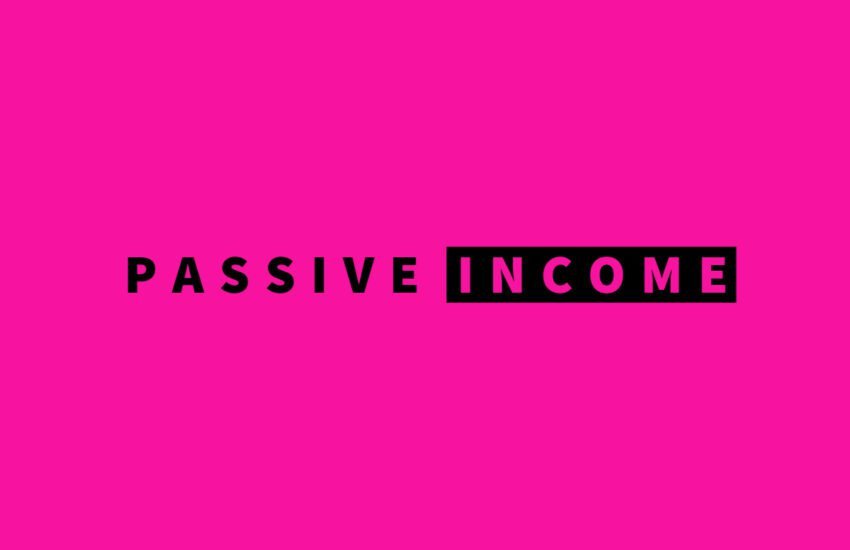How to Enhance Collaboration by using Tools for Team Blogging
When it comes to blogging with a team or inviting guest writers, having the right collaboration features can make all the difference. Fortunately, many blogging platforms offer these features, allowing you to grant different levels of access and enabling multiple contributors to work on the blog simultaneously.
- Collaboration Features for Team Blogging
- 10 Common Tools for Collaboration within Teams
- Conclusion
- Frequently Asked Questions
- 1. What are the benefits of using collaborative tools for team blogging?
- 2. How can WordPress facilitate team collaboration in blogging?
- 3. What role does Google Docs play in team blogging collaboration?
- 4. How can project management tools like Trello and Asana enhance team collaboration in blogging?
- 5. What are some best practices for using collaboration tools effectively in team blogging?
- 6. How can version control tools like GitHub benefit team collaboration in blogging?
- 7. What role do cloud storage services like Dropbox play in team blogging collaboration?
- 8. How can writing assistant tools like Grammarly contribute to team collaboration in blogging?
- 9. What role do social media management platforms like Hootsuite and Buffer play in team blogging collaboration?
- 10. How can teams ensure effective collaboration and communication while using collaborative tools for blogging?
Collaboration Features for Team Blogging
In this article, we will explore some of the collaboration features that can enhance your team blogging experience.
1. User Roles and Permissions
One of the key collaboration features offered by blogging platforms is the ability to assign different user roles and permissions. This allows you to control who can do what on your blog. For example, you can have an “Admin” role with full access and control, a “Contributor” role with the ability to write and edit posts, and a “Viewer” role with read-only access. By assigning the appropriate roles to your team members or guest writers, you can ensure that everyone has the right level of access and responsibility.
2. Drafts and Review Process
Collaboration features also include the ability to create drafts and establish a review process. This is particularly useful when working with a team, as it allows you to collaborate on content before it goes live. With this feature, contributors can create drafts of their posts, and other team members can review and provide feedback. This ensures that the content meets the desired quality standards and maintains a consistent tone and style across the blog.
3. Comments and Feedback
Another important collaboration feature is the ability to leave comments and provide feedback on blog posts. This feature facilitates communication and collaboration between team members or between the blog owner and guest writers. Comments can be used to suggest edits, ask questions, or provide additional information. By having a centralized platform for discussions, you can streamline the feedback process and ensure that everyone is on the same page.
4. Content Calendar and Scheduling
A content calendar and scheduling feature can greatly enhance team collaboration and organization. With this feature, you can plan and schedule blog posts in advance, assign deadlines to contributors, and have a clear overview of the publishing schedule. This not only helps in coordinating efforts but also ensures a consistent flow of content on your blog. By having a well-planned content calendar, you can avoid last-minute rushes and maintain a regular posting frequency.
5. Version Control and Revisions
Version control and revision tracking are essential collaboration features for any blogging platform. They allow you to keep track of changes made to a blog post and revert to previous versions if needed. This is particularly useful when multiple contributors are working on a post simultaneously or when edits need to be reviewed and approved. With version control, you can ensure that the final published version of a blog post is error-free and reflects the collective efforts of your team.
10 Common Tools for Collaboration within Teams
1. WordPress
WordPress is a popular content management system (CMS) that allows teams to create and manage blogs collaboratively. It offers features like user management, roles and permissions, and commenting, making it easy for teams to collaborate on content creation.
2. Google Docs
Google Docs is a cloud-based document editor that enables real-time collaboration. Teams can use Google Docs to draft and edit blog posts together, leave comments, and track changes.
3. Slack
Slack is a messaging platform that facilitates communication and collaboration within teams. Teams can create dedicated channels for blogging discussions, share ideas, and receive feedback on blog posts.
4. Trello
Trello is a project management tool that uses boards, lists, and cards to organize tasks. Teams can use Trello to plan their blog content, assign tasks to team members, and track the progress of blog posts from ideation to publication.
5. Asana
Asana is another project management tool that helps teams organize and manage their work. Teams can use Asana to create editorial calendars, set deadlines for blog posts, and coordinate workflows.
6. GitHub
GitHub is a platform for version control and collaboration on software projects, but it can also be used for managing content collaboration, including blog posts. Teams can use GitHub to store blog post drafts, track changes, and collaborate on revisions.
7. Dropbox
Dropbox is a cloud storage service that allows teams to store and share files securely. Teams can use Dropbox to store images, documents, and other assets related to their blog posts, making it easy to collaborate on content creation.
8. Grammarly
Grammarly is a writing assistant tool that helps teams improve the quality of their blog posts. Teams can use Grammarly to check for grammar and spelling errors, as well as to improve clarity and style.
9. Hootsuite
Hootsuite is a social media management platform that allows teams to schedule and publish blog posts on social media channels. Teams can use Hootsuite to coordinate their blog promotion efforts and track engagement metrics.
10. Buffer
Buffer is another social media management tool that enables teams to schedule and publish blog posts across multiple social media platforms. Teams can use Buffer to streamline their social media posting process and analyze the performance of their blog content.
Conclusion
Collaboration features are vital for team blogging and inviting guest writers. They enable you to manage user roles and permissions, establish a smooth draft and review process, facilitate comments and feedback, plan and schedule content, and maintain version control. By utilizing these collaboration features, you can create a seamless and efficient workflow for your team, resulting in high-quality blog posts and a successful blogging experience.
Frequently Asked Questions
1. What are the benefits of using collaborative tools for team blogging?
Collaborative tools for team blogging offer several benefits, including improved communication, streamlined workflows, better organization, enhanced productivity, and the ability to track and manage tasks efficiently. These tools facilitate real-time collaboration, allowing team members to work together seamlessly regardless of their location.
2. How can WordPress facilitate team collaboration in blogging?
WordPress provides a robust platform for team collaboration in blogging. It offers features such as user roles and permissions, version control, commenting, and content scheduling. Team members can collaborate on drafting, editing, and publishing blog posts, while administrators can control access and manage workflows.
3. What role does Google Docs play in team blogging collaboration?
Google Docs is a cloud-based document editor that enables real-time collaboration. Team members can work together on writing and editing blog posts, leave comments, suggest changes, and track revisions. Google Docs streamlines the content creation process and allows teams to collaborate seamlessly, regardless of their location.
4. How can project management tools like Trello and Asana enhance team collaboration in blogging?
Trello and Asana are project management tools that help teams organize and manage their blogging efforts. They allow teams to create editorial calendars, assign tasks, set deadlines, and track the progress of blog posts. These tools facilitate collaboration by providing a centralized platform for planning, communication, and task management.
5. What are some best practices for using collaboration tools effectively in team blogging?
Some best practices for using collaboration tools effectively in team blogging include defining clear roles and responsibilities, establishing communication channels, setting deadlines and milestones, documenting workflows and processes, providing training and support for team members, and regularly evaluating and adjusting collaboration strategies based on feedback and performance.
6. How can version control tools like GitHub benefit team collaboration in blogging?
GitHub is a version control platform that allows teams to manage and collaborate on content revisions. It provides features such as branching, merging, and version history, allowing teams to track changes, resolve conflicts, and maintain a centralized repository of blog post drafts. GitHub enhances collaboration by ensuring that team members are working on the latest version of content and facilitating collaboration on revisions.
7. What role do cloud storage services like Dropbox play in team blogging collaboration?
Dropbox is a cloud storage service that allows teams to store and share files securely. It provides a centralized repository for storing blog post drafts, images, documents, and other assets. Teams can collaborate on content creation by accessing and sharing files, making it easy to work together regardless of their location.
8. How can writing assistant tools like Grammarly contribute to team collaboration in blogging?
Grammarly is a writing assistant tool that helps teams improve the quality of their blog posts. It checks for grammar and spelling errors, suggests improvements for clarity and style, and provides feedback on readability and tone. Grammarly enhances collaboration by helping team members communicate effectively and produce high-quality content.
9. What role do social media management platforms like Hootsuite and Buffer play in team blogging collaboration?
Hootsuite and Buffer are social media management platforms that allow teams to schedule and publish blog posts on social media channels. They streamline the promotion process by enabling teams to coordinate their social media posting efforts, schedule posts in advance, and analyze performance metrics. These platforms enhance collaboration by facilitating coordinated promotion efforts across multiple channels.
10. How can teams ensure effective collaboration and communication while using collaborative tools for blogging?
Effective collaboration and communication are essential for successful team blogging. Teams can ensure effective collaboration by establishing clear goals and objectives, defining roles and responsibilities, maintaining open and transparent communication channels, providing regular feedback and updates, and fostering a culture of collaboration and teamwork. Additionally, teams should leverage collaborative tools effectively, provide training and support for team members, and regularly evaluate and adjust their collaboration strategies based on feedback and performance metrics.


